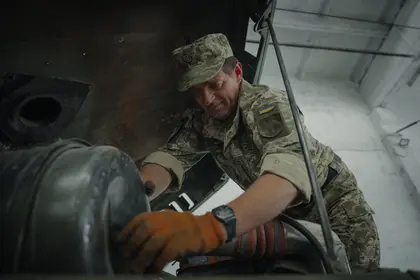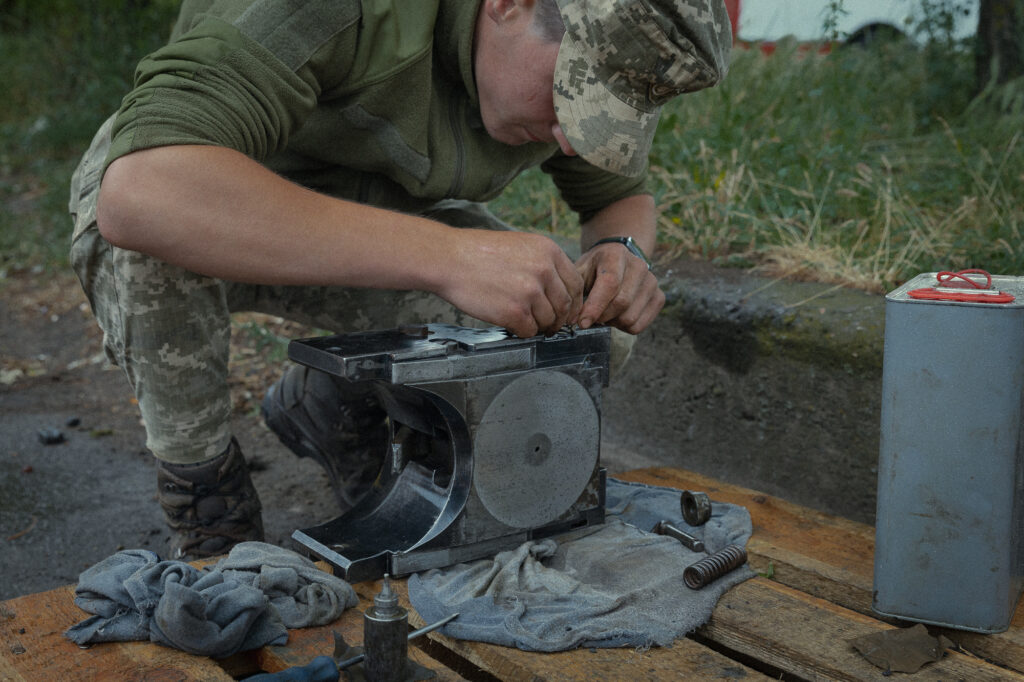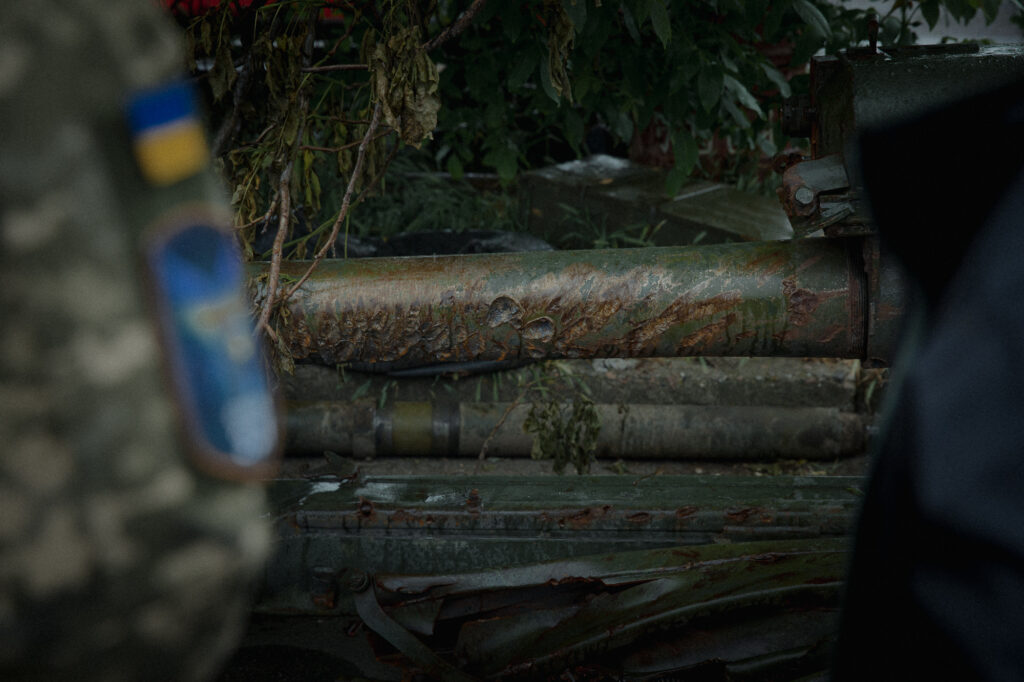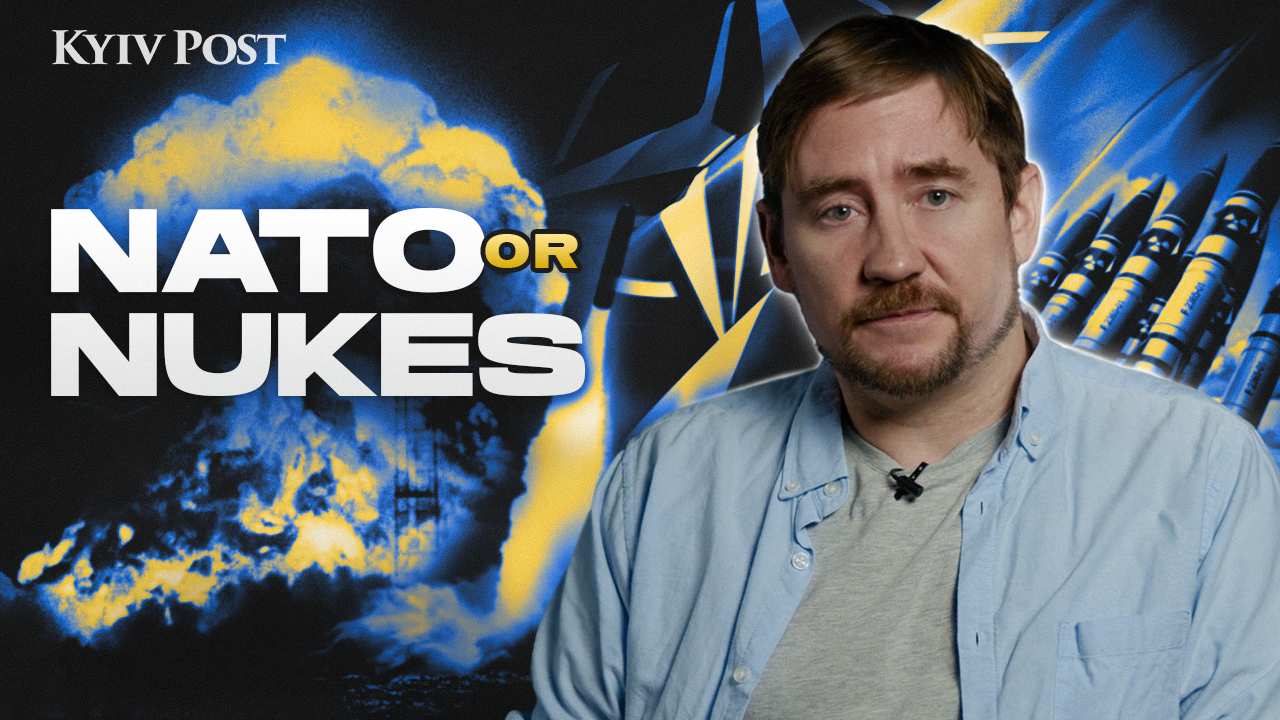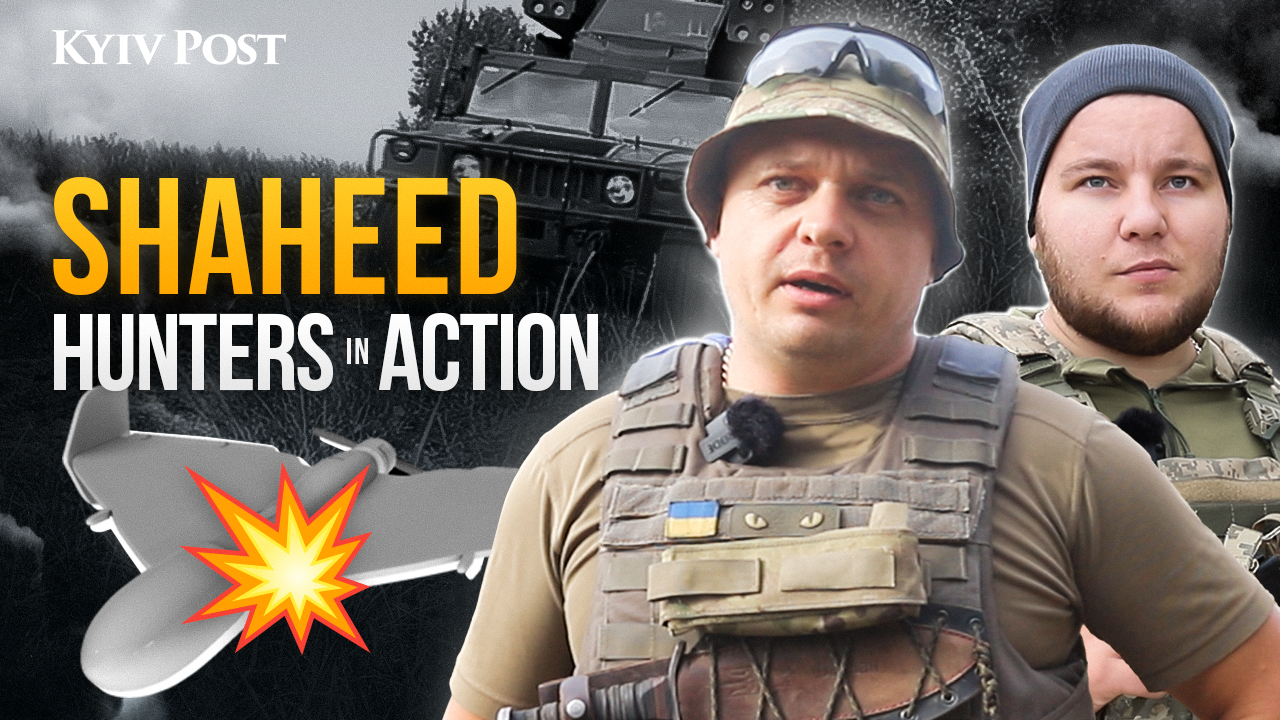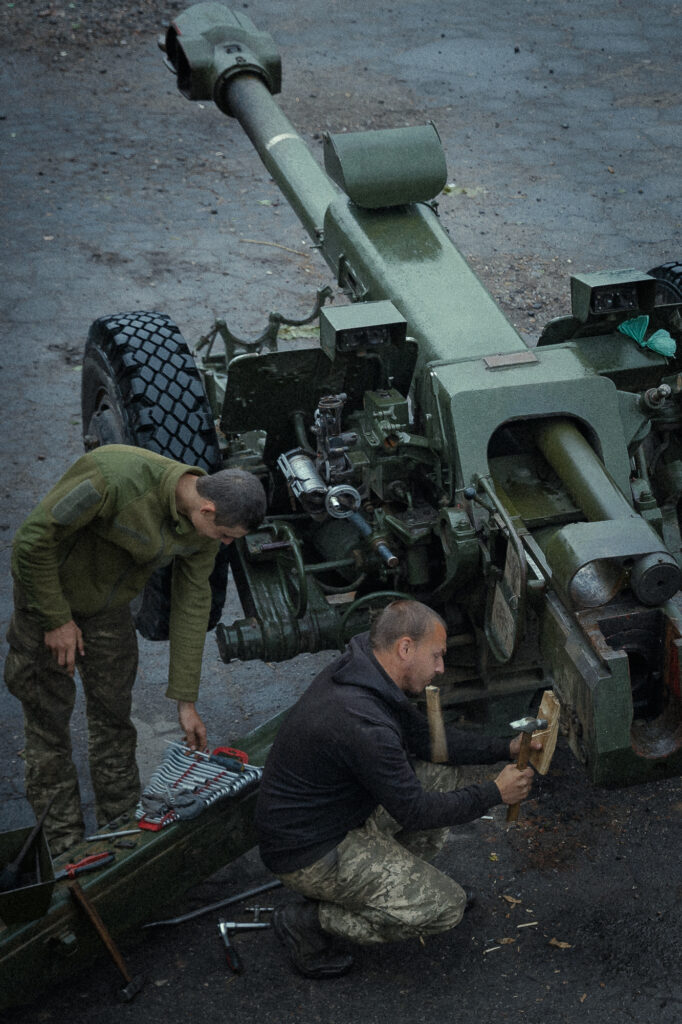It looks like a junkyard. Beat-up automobiles and piles of bald tires; puddles of water swirling with oil; and stray dogs wandering through weeds which push up through the cracked asphalt.
Next to one vehicle, a group of middle-aged men huddle around as the youngest of the team pulls out a component. A guarded gate regularly opens to let out a heavily-loaded flatbed, then soon after returns empty.
JOIN US ON TELEGRAM
Follow our coverage of the war on the @Kyivpost_official.
But of course, partly and wholly disassembled armored personnel carriers, artillery cannon and infantry fighting vehicles, all painted dark green and emblazoned with the notorious white Russian Federation “V” or “Z” symbols, are not mainstays of just any Ukrainian junkyard.
In Ukraine’s southern sector, in a suburb of the industrial city of Mykolaiv, a ratty enclosure that was once a Soviet-era truck base now feels like a wartime bat-cave. It is, in fact, the main logistics and maintenance hub of the Ukrainian Armed Forces’ (UAF) 50th Mechanized Infantry Brigade.
The war usually feels pretty far away from here, but sometimes comes perilously close. During an end-of-May visit from the Kyiv Post, artillery was audible for most of the morning, and later in the day it emerged that at least two civilians had died in shelling elsewhere in the city.
In the base parking lot, we counted at least 50 buses, infantry fighting vehicles, howitzers, jeeps, anti-tank guns, as well as military and civilian trucks, mostly waiting their turn for a repair team. A few other vehicles were rusting away as hulks, which the Ukrainian mechanics call “donors” for the value of their spare parts. Mechanic Dmitro Goshko told us that captured Russian BMP armored fighting vehicles are among the most prized possessions. A BMP is a tracked personnel carrier that looks a little like a tank with a small cannon and a turret. Its main job is supporting close-up fighting, meaning that without enough BMPs, Ukrainian infantrymen’s lives are in greater danger.
At full strength, the 50th Brigade has around 120 BMPs. The average UAF BMP is at least 30 years old, meaning that BMP components are like gold dust to brigade mechanics who fight a constant battle to keep enough of them out on the road.
Captured Russian BMPs tend to be newer and are rarely more than 20 years old. Goshko said that without steady supplies of captured Russian combat vehicles like BMPs, the 50th Brigade would have serious trouble keeping its own BMPs in action.
Work on these large-armored vehicles takes place outside in any weather. Things that make a military mechanic’s life easier and his work faster in NATO armies – chemical toilets, big red rolling tool kits, crescent wrenches for each mechanic, space heaters, hydraulic jacks and power tools – are absent. The base has no shift system. Mechanics just do the job until the work is done.
A common Russian tactic before abandoning a vehicle is to pour sugar into the diesel engine and then run the motor which, in most armies, writes the motor off completely. UAF mechanics take these sabotaged engines apart, scrub all the pieces with wire brushes and cleansers, then put them back together again. Usually, an engine with the sugar cleaned out will keep moving for a month or two before it winds up in the shop once again for some other reason. But not always.
The 50th Brigade logistics team has a truck section that carries ammunition to the brigade’s tanks and artillery pieces. The maintenance teams schedule unit vehicles for oil changes and overhauls, while the field kitchens bake bread and cook meals for the team (when we visited, it was wheat porridge with stewed pork). There are warehouses with food, housing and construction supplies, as well as clothes washing machines donated by volunteers.
Unlike most armies, the 50th Brigade’s logistics team operates an unofficial “catch and drag” section, equipped with its own fleet of specialized tow vehicles (some “donated” by Russia). Its mission is to travel to the battlefield, hunt down abandoned or damaged vehicles, then haul them back to the mechanics. The larceny can take place under fire or in minefields.
Sergeant Oleksander Bilkov is one of the brigade’s luckiest mechanics, having recently returned from a trip to Germany to learn about NATO-standard U.S.-made M777 howitzers (these are now in the field and the brigade must be ready to repair them). He went through a two-week course working the weapons and another ten-day course on repairs.
Bilkov described the training as excellent and is in awe of NATO-standard cannon maintenance. To properly take care of an M777, he said, a NATO mechanic is graced with lifts, dedicated tools and digital testing equipment, along with a computerized parts tracking system that orders him what he needs at the click of a mouse.
No busted M777 howitzers have come through the gates of the 50th Brigade’s repair base – at least yet. But when one does, soldiers and officers said it will be repaired the same way that captured Russian weapons are being dealt with – by machining replacement parts, by cannibalizing, and by fixing components not designed to be fixed. Thanks to NATO courses, the brigade now has mechanics like Bilkov trained in fixing the M777 – but not a single spare part for the weapon system.
NOTE: UAF representatives requested that the Kyiv Post not make public unit designation and soldier identities, for security reasons. The 50th Brigade identifier and soldier names used in this story are pseudonyms.
You can also highlight the text and press Ctrl + Enter


